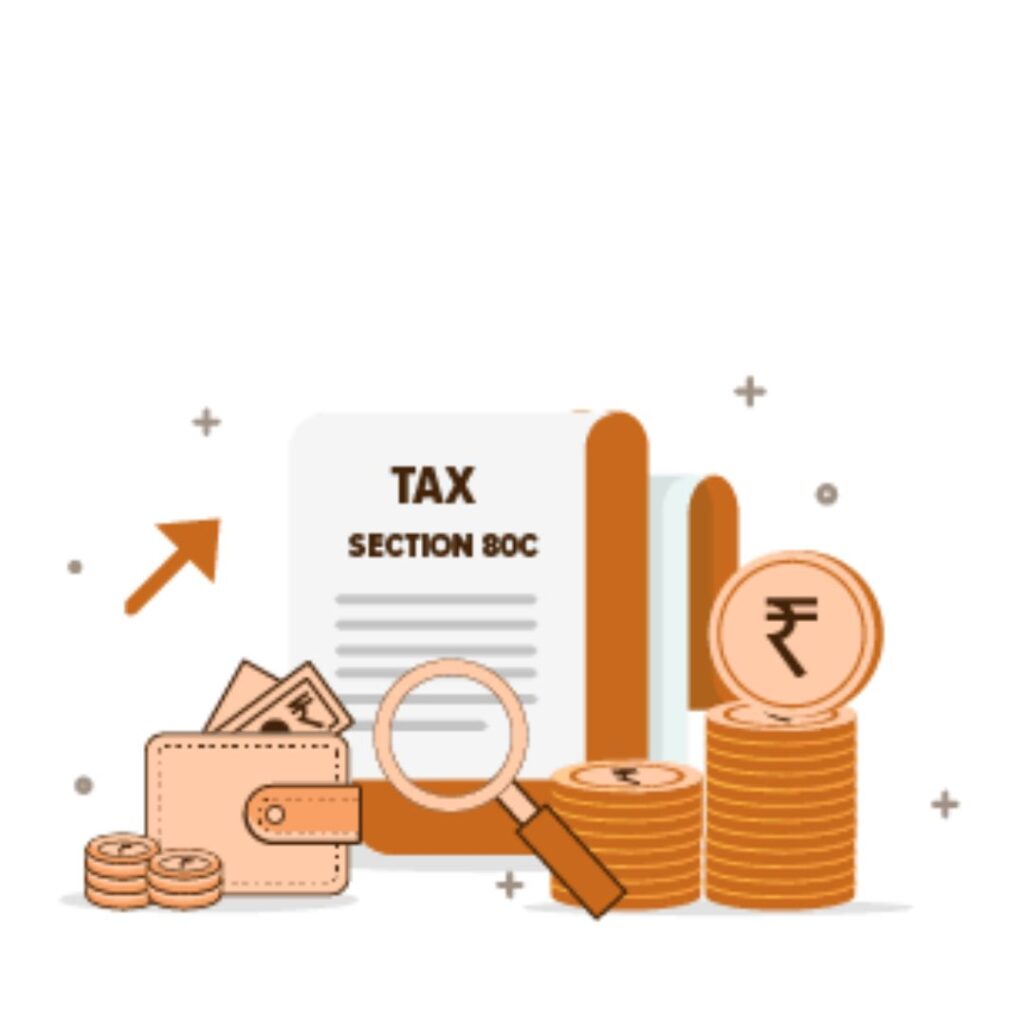User Intent
Users searching for this topic want to understand whether Provident Fund (PF) qualifies for tax benefits under Section 80C of the Income Tax Act, 1961. They are likely looking for clear explanations, benefits, limitations, and a comparative analysis with other tax-saving options.
Introduction
Tax planning is an essential part of financial management. One of the most common tax-saving avenues for salaried employees is the Provident Fund (PF). But does PF fall under Section 80C? The answer is yes! This article will break down everything you need to know about how PF helps in tax savings and its implications under Section 80C.
Definition of Provident Fund (PF) and Section 80C
What is Provident Fund (PF)?
The Provident Fund (PF) is a government-backed savings scheme aimed at ensuring financial security for employees after retirement. Contributions are made both by the employee and the employer.
There are different types of Provident Funds:
- Employee Provident Fund (EPF) – For salaried employees in India.
- Public Provident Fund (PPF) – A voluntary scheme available to all individuals.
- Voluntary Provident Fund (VPF) – Additional voluntary contributions to EPF.
What is Section 80C?
Section 80C of the Income Tax Act, 1961, allows individuals to claim deductions up to ₹1.5 lakh per year on certain investments and expenditures, reducing taxable income.
Application of PF under Section 80C
Yes, Provident Fund contributions qualify for deduction under Section 80C. Here’s how:
1. Employee Provident Fund (EPF)
- Employee contributions to EPF (12% of basic salary + DA) are eligible for deduction under Section 80C.
- The employer’s contribution is not eligible for tax deduction under 80C but is exempt under different tax provisions.
2. Public Provident Fund (PPF)
- Contributions made to PPF accounts are fully eligible for deductions under Section 80C.
- The PPF has a lock-in period of 15 years, making it a long-term investment option.
3. Voluntary Provident Fund (VPF)
- Employees can contribute extra voluntarily to their EPF, called VPF.
- This additional contribution is also eligible for 80C tax deductions.
Benefits of Claiming PF Under Section 80C
1. Significant Tax Savings
- Contributions up to ₹1.5 lakh under 80C help reduce taxable income.
- Leads to lower tax liability and higher take-home salary.
2. Long-term Wealth Creation
- EPF and PPF provide compound interest, ensuring financial stability post-retirement.
- PPF offers a guaranteed return, making it a safe investment option.
3. EEE Tax Exemption
- Exempt-Exempt-Exempt (EEE) status applies to EPF and PPF:
- Contributions are deductible under Section 80C.
- Interest earned is tax-free.
- Withdrawals (subject to conditions) are tax-free.
4. Government-Backed Security
- PF is government-regulated, ensuring safety and credibility.
- Unlike market-linked instruments, it provides a stable return.
5. Employee Benefit & Employer Contribution
- Employers contribute an equal amount to EPF, boosting retirement savings.
For more information visit this site: https://www.incometax.gov.in
Limitations of PF Under Section 80C
1. ₹1.5 Lakh Cap
- The total deduction under 80C is capped at ₹1.5 lakh per year, which includes other investments like LIC premiums, ELSS, and NSC.
2. Lock-in Period
- EPF can be withdrawn fully only after retirement (except under special circumstances).
- PPF has a 15-year lock-in, restricting liquidity.
3. Tax on Premature Withdrawal
- EPF withdrawals before 5 years of continuous service are taxable.
- PPF allows partial withdrawals only after 5 years.
4. Lower Returns Compared to Market Investments
- While safe, EPF and PPF offer lower returns than ELSS funds or equity investments.
Comparative Table: PF vs Other 80C Investments
| Investment Option | Eligible Under 80C | Lock-in Period | Interest Rate (Approx) | Tax on Maturity |
|---|---|---|---|---|
| Employee PF (EPF) | ✅ Yes | Till retirement | 8.15% | Tax-free (after 5 years) |
| Public PF (PPF) | ✅ Yes | 15 years | 7.1% | Tax-free |
| Voluntary PF (VPF) | ✅ Yes | Till retirement | 8.15% | Tax-free (after 5 years) |
| Equity Linked Savings Scheme (ELSS) | ✅ Yes | 3 years | Varies (market-linked) | Taxable (LTCG > ₹1 lakh) |
| National Savings Certificate (NSC) | ✅ Yes | 5 years | 7.7% | Taxable |
Conclusion
Yes, Provident Fund (PF) falls under Section 80C and helps salaried individuals save tax efficiently. While EPF, PPF, and VPF are excellent long-term investment options with tax benefits, they come with restrictions like lock-in periods and lower returns compared to market-linked investments. For those looking for stable and safe tax-saving investments, PF is a great choice.
FAQs
1. Can I claim both EPF and PPF under 80C?
Yes, both EPF and PPF contributions are eligible under 80C, but the total deduction cannot exceed ₹1.5 lakh.
2. Is employer contribution to EPF eligible for deduction?
No, only employee contributions qualify under Section 80C.
3. Can I withdraw my PF before retirement?
Yes, but premature EPF withdrawal (before 5 years) is taxable. PPF allows partial withdrawals after 5 years.
4. Is VPF better than PPF?
VPF offers higher interest (8.15%) than PPF (7.1%), but it’s linked to your employment. PPF is independent and safer for long-term wealth creation.
5. What happens if I exceed the ₹1.5 lakh limit in PF contributions?
Excess EPF/PPF contributions beyond 80C limit are not tax-deductible but will still earn interest.
For further details access our website: https://vibrantfinserv.com

